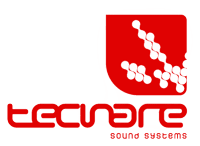Explore the World of Pro Audio
Audio Network Transmission Protocols: Dante, AVB, MADI, and AES67
In professional audio, network-based transmission protocols have replaced traditional systems, offering greater flexibility, scalability, and efficiency. Among the most relevant are Dante, AVB, MADI, and AES67—each with specific characteristics and applications. Below, we examine their features, differences, and recommended use cases.
Dante, AVB, MADI, and AES67
Explore Other Topics
Acoustic Science
Dive into the principles and theories that define sound and its behavior in different environments.
Audio Technology
Stay updated with the latest advancements and innovations in audio equipment and software.
Sound Design
Explore the art and techniques of creating immersive soundscapes for various media.
Music Production
Learn about the processes and tools used in crafting and producing music.
Environmental Acoustics
Understand how sound interacts with natural and urban environments.
Psychoacoustics
Study how humans perceive and interpret different sounds.
Audio Engineering
Gain insights into the technical aspects of recording and manipulating sound.
Sound History
Discover the evolution of sound technology and its impact on society.
Featured Articles
Tecnare
Loudspeakers Series
E Series
IBZA Series
V Series
ALIS Series
Array Series
SW Series
KT Series
TANIT Series
CS Series
Amplifiers Series
Digital Processors
Accessories
AUDIO
